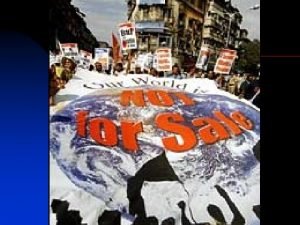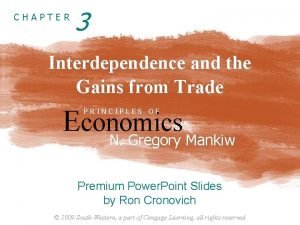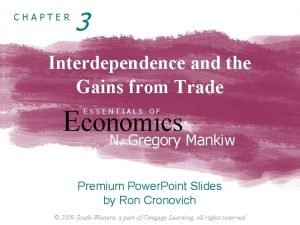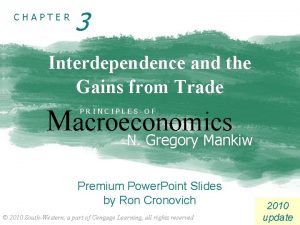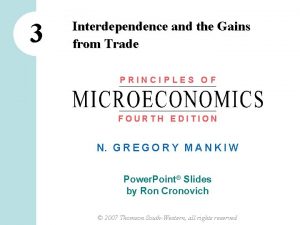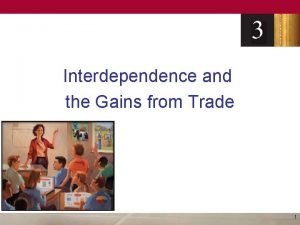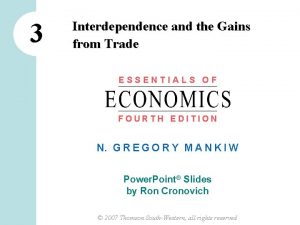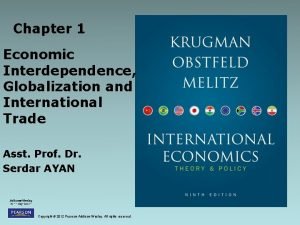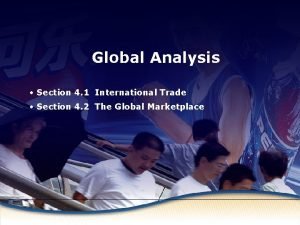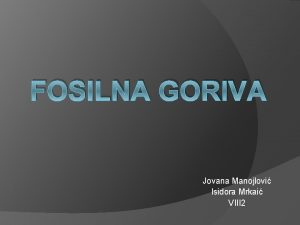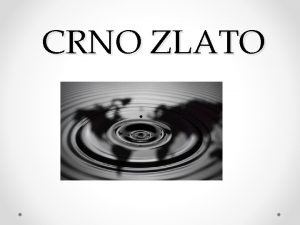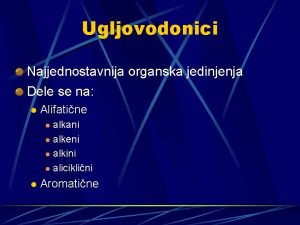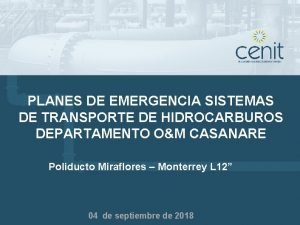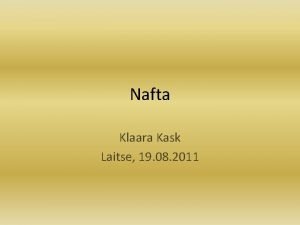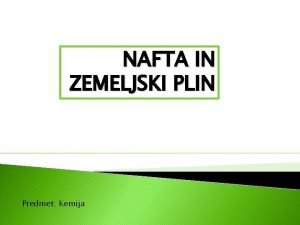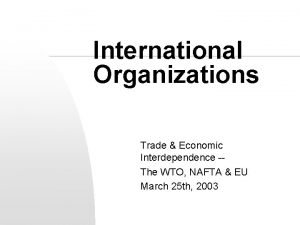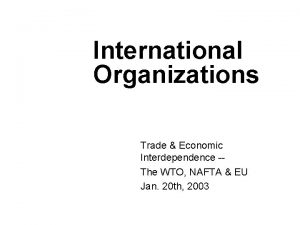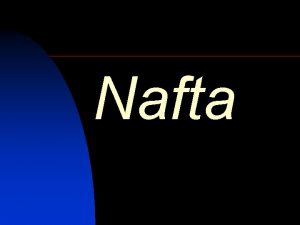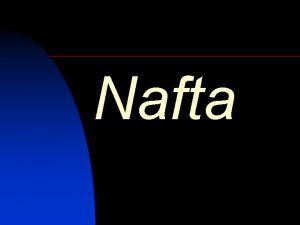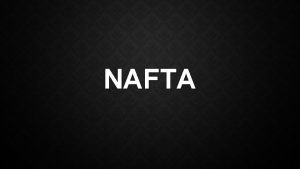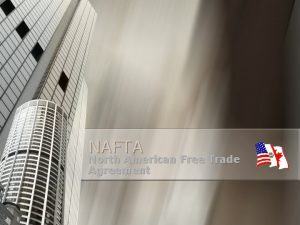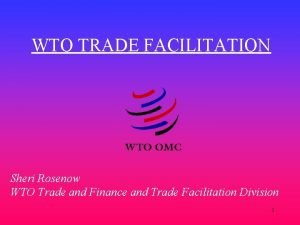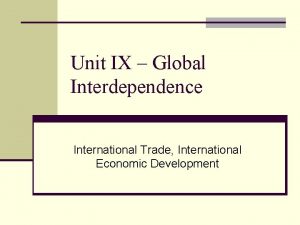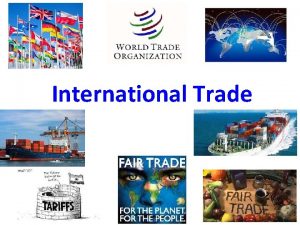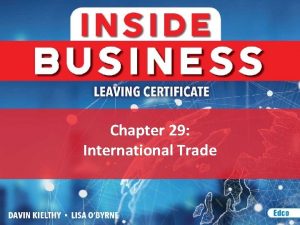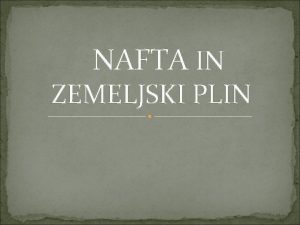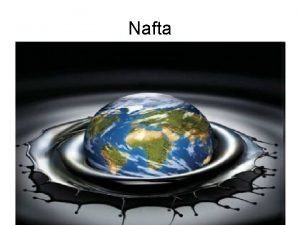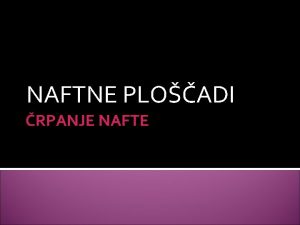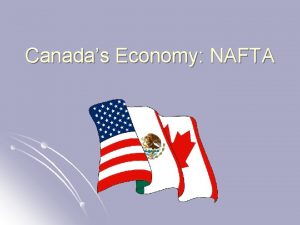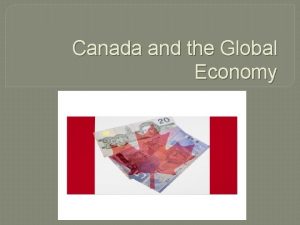International Organizations Trade Economic Interdependence The WTO NAFTA


















- Slides: 18

International Organizations Trade & Economic Interdependence -The WTO, NAFTA & EU March 25 th, 2003

Arrangements for Economic/Political Integration n range of options for integration trade (WTO & GATT) u trade plus (NAFTA) u political and economic integration (EU) u

Bretton Woods (1944) n history u era of freer trade prior to WW 1 « economic stagnation, collapse of world trade, Great Depression end of WW 2 – Bretton Woods central premise -- expanding international trade held the key to stable economic reconstruction u trade based on openness and currency stability fixed-exchange rate u world trade conducted in US dollars u based on US dollar backed by gold (1 oz gold=$35 US) u countries declared a fixed exchange rate (i. e. value of domestic currency in US$ u collapsed in 1971 u n n « US suspension of the gold standard moved the international market to a system of floating exchange rates (value of domestic currency determined by international supply and demand)

Bretton Woods (1944) n n central premise (importance of trade) and institutional infrastructure remains institutional infrastructure u World « Bank provides access to international capital markets by guaranteeing loans u International « Monetary Fund (IMF) oversee fixed (but adjustable) exchange rate system u General Agreement on Trade and Tariffs (GATT) facilitate freer trade on a multilateral basis « GATT rounds (multi-year periods of negotiations) « Uruguay Round, 1993 « • created the WTO (1995)

The World Trade Organization (WTO) n function – enhance trade builds on GATT framework u covers all of trade including manufactured goods, services, and intellectual property u designed to promote international trade and adjudicate trade disputes u

The WTO – Organizational Structure n organization of governments « « n member-driven various interest groups can only influence the WTO through their own government membership is voluntary « 145 member countries • China – December 2001 « n decisions generally decided by consensus « « n accession – must ask to join one member, one vote agreements must be ratified in national parliaments adjudicating disputes « « country expected to implement ruling with reasonable time period failure to implement within reasonable time period – must enter negotiations with complaining country to determine mutually-acceptable trade-related compensation no agreement on compensation – WTO authorizes retaliation WTO does not impose penalties above and beyond retaliatory actions that would be available to a country in the absence of WTO adjudication

The World Trade Organization n principles (self-declared) u trade without discrimination most-favoured nation (non-discrimination) « national treatment « u u freer trade predictability « u fair competition « u more stable business environment anti-dumping & subsidies encouraging development and economic reform progressive/flexible liberalization « special assistance and trade concessions for developing countries «

The World Trade Organization n Canada and the WTO u as complainant « US Dumping and Subsidies Offset Act « softwood lumber « asbestos u as respondent « Canadian Wheat Board

NAFTA – Trade Plus n Free Trade Agreement (FTA), 1989 u u Canada and US removal of almost all barriers to flow of goods and services between the two countries reduction of tarrif and non-tariff barriers (e. g. subsidies) « national treatment «

NAFTA – Trade Plus n North American Free Trade Agreement (NAFTA), 1994 u extended FTA to Mexico u limited differences between FTA and NAFTA « « « expanded to include intellectual property, medical services, etc. border crossing for business people side agreements • environment • labour standards « Chpt. 11 on investment • expropriation and compensation • provides rights to foreign investors that are not constitutionally guaranteed to domestic investors in Canada

NAFTA – Trade Plus n similar to principles enshrined under WTO plus. . . u u u investor protection cross-border mobility environment and labour side agreements

European Union (EU) – Economic & Political Integration n expansion – deepening and broadening integration u European Coal and Steel Community, 1951 « u European Economic Community (EEC), 1957 « « u six countries (Belgium, France, Germany, Italy, Luxembourg, the Netherlands) negative integration – absence of restrictions on movement of workers, goods, services Denmark, Ireland UK admitted, 1972 European Union, 1993 « positive integration – actively fostering integration • Maastricht Treaty, 1992 • Amsterdam Treaty, 1997 « 15 members currently • Greece (1986), Spain (1986), Portugal (1986), Austria (1995), Finland (1995), Sweden (1995) • 10 candidate countries (Bulgaria, Czech Republic, Estonia, Cyprus, Latvia, Lithuania, Hungary, Malta, Poland, Romania, Slovenia, Slovakia, Turkey)

European Union (EU) – Institutions n legislative – shared legislative powers « Council of the European Union • ministers and heads of state of member countries « European Parliament • direct election n executive – European Commission u u n President and commissioners appointed by member states confirmed by European Parliament judiciary – Court of Justice

European Union (EU) – Economic Integration n single market u n free movement of people, capital (investment), goods and services monetary union « the Euro • comes into existence January, 1999 • banknotes and coins in circulation, January 2002 • national banknotes and coins withdrawn from use (February 2002) n common labour market « Schengen Agreement, 1985

European Union (EU) – Political Integration n political integration u common political institutions « u e. g. European Parliament common European citizenship freedom of movements « fundamental rights « civil and political rights « u common social citizenship (limited) « u access to social programs in other countries common currency money traditionally symbol of sovereignty « requires integrated monetary policy «

Implications for Domestic Democratic Systems n increasingly limits domestic policy latitude to what degree do democratically elected governments have the right to cede sovereignty in international agreements u to what degree can they make decisions that are binding on future governments? u n questions regarding citizen control and involvement in discussion over terms of trade e. g. WTO and the “Battle in Seattle” u what is the required level of citizen engagement? u « is involvement of democratically elected governments enough?

Main Points! n range of options for integration trade (WTO & GATT) u trade plus (NAFTA) u political and economic integration (EU) u n each set of options raises important questions about democracy

 Nafta and wto
Nafta and wto Interdependence and the gains from trade
Interdependence and the gains from trade Chapter 3 interdependence and the gains from trade summary
Chapter 3 interdependence and the gains from trade summary Chapter 3 interdependence and the gains from trade answers
Chapter 3 interdependence and the gains from trade answers Interdependence and the gains from trade chapter 3
Interdependence and the gains from trade chapter 3 Chapter 3 interdependence and the gains from trade summary
Chapter 3 interdependence and the gains from trade summary Interdependence and the gains from trade
Interdependence and the gains from trade Interdependence and the gains from trade
Interdependence and the gains from trade Economic interdependence pros and cons
Economic interdependence pros and cons Economic interdependence
Economic interdependence Nafta referat
Nafta referat Nafta i zemni gas prezentacija
Nafta i zemni gas prezentacija Nafta crno zlato
Nafta crno zlato Etan propan butan heksan
Etan propan butan heksan Boundaries ap human geography
Boundaries ap human geography Nafta
Nafta North american free trade agreement
North american free trade agreement Nafta fraktsioneeriv destillatsioon
Nafta fraktsioneeriv destillatsioon Nafta in zemeljski plin
Nafta in zemeljski plin
